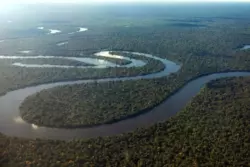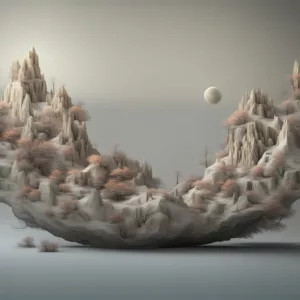The 3 kayas are the ‘body’ of buddha essence. They are the purified forms of a being who attained enlightenment.
- Dharmakaya: body of truth. Ultimate reality
- Sambhogakaya: enjoyment body. Arising of that reality in awareness form
- Nirmanakaya: body of form. Union of both for the purpose of teaching
Table of Contents

Trikaya description of 3 bodies in Buddhism
Kaya’s meaning is ‘body.’ The 3 kayas, or trikaya – three bodies- of Dharmakaya, Sambhogakaya, and Nirmanakaya are the purified aspects of a being after enlightenment. They function for those still on the path as an object of practice. The 3 kayas are the 3 bodies of Buddha, how the Buddha exists. Not as a being, per se, but as a totalized reality of Buddhaness. The 3 kayas, though inseparable, are broken out for purposes of explanation and practice. A practitioner can focus on a particular kaya in order to relate to buddha and attain some realization through that gate, that door.
4 kayas
But this separation is only a relative way of viewing the 3 kayas. In fact, it is obviously conceptual. The reality is beyond that. That is said to be the 4th (or even 5th) kaya. Svabhavikakaya. From this perspective, the 3 kayas are aspects of the Svabhavikakaya. The ultimate manifests as the other 2 for classes of beings and their perceptions.
How to meditate like a yogi
and enter profound samadhi
3 kayas: Dharmakaya
Dharmakaya is the body of truth. Dharma means ‘truth’ here. It is the body or form of ultimate reality, meaning it is formless. Also known as the sphere of absolute being, great emptiness, limitless expanse and so forth. It is the ultimate unspeakable, inconceivable reality. It lies beyond any experience because it is beyond duality. If someone experienced it that would mandate perceiver and perceived, ie duality. Since it is nondual, an ‘experience’ of it would be impossible.
The dharmakaya is the way things are in their deepest most absolute essence. In a sense the dharmakaya is also the storehouse of potential manifestations of enlightened and unenlightened forms. Everything emanates, in a sense, from the dharmakaya and is contained within the dharmakaya. Though they appear separate to our confused minds, phenomena never actually leave the dharmakaya and could never be separate from it. It is all-pervasive.
Most teachings on emptiness in the bodhisattva / Mahayana path are trying to get the practitioner to see or glimpse dharmakaya directly. Taking a conceptual approach to emptiness, seeing the non-existence of phenomena, getting subtler and subtler with emptiness and overcoming the faintest concepts: this is what the Prasangika Madhyamika does. It overturns increasingly deep and hidden conceptual layers in order to reveal emptiness and the Great emptiness.
One of the mistakes in the path of logical Madhyamika is overcoming emptiness as a truly existent thing and forming a concept of the absence of anything altogether. Emptiness becomes a sort of nothingness, but the concept has become so rarified that the practitioner cannot detect it. This then blocks the approach to enlightenment and the immersion into dharmakaya.
However, Dharmakaya is not nothingness. Nor is it somethingness. Nor anything in particular. It is beyond all these ideas, like the feeling when an eagle swoops directly overhead. Obviously an eagle flying over can be described, but there is a feeling that cannot be captured in words.
This is the sense of the dharmakaya, the wordlessness of it. Signlessness. Emptiness of all concept of it. The dharmakaya arises in association with wisdom, insight into the nature of reality.



3 kayas: Sambhogakaya
The Sambhogakaya arises as the manifestation of that wisdom. It is associated with compassion, specifically the skillful means of compassion. Skillful means here is the ability to bring beings to liberation and enlightenment. This kaya, the enjoyment body, is the home of wisdom beings, yidams or deities, dhamapalas, dakinis – protectors, and dralas. These beings are not physical, but made of clear light.
The essential quality is luminous awareness, whereas the dharmakaya is empty awareness. Dharmakaya is the unfindability of it, the tracelessness and timelessness. Here it is the vividness of the ‘play of the mind.’ The ground of Sambhogakaya
As the ‘enjoyment body,’ it manifests blissfulness, profound clarity, and joy. It joins the dharmakaya of profound nonthought and nonbeing with the nirmanakaya manifestation of compassion. Those two kayas are inherent in the Sambhogakaya. But it’s principal focus could be said to be clarity, the vivid and powerful focus on the buddha qualities as manifested in an immaterial, non-substantive form – as light and bodies of light, as the deity.
The meditative path of dharmakaya and sambhogakaya alternates between the completion stage of dharmakaya, focused on emptiness and non-being and the creation stage, the calling forth of the deity and the manifest buddha qualities offered as the sambhogakaya.

Flow, the profound mental state, also called Peak Performance, can be attained with meditation and can be ‘triggered’ at will, with enough discipline. Guide to Flow Mastery will teach you how.
3 kayas: Nirmanakaya
The fruition of these is the nirmanakaya, the ability to manifest the other 2 in a physical body, in a life by bringing them together. The 3rd kaya, the form body or manifestation body, specifically focuses on benefitting others. The nirmakaya deliberately takes rebirth to gather students, teach them and help them walk the path of liberation and enlightenment. The nirmanakaya gives appropriate teachings at the appropriate moment. They manifest the dharma in the most direct or beneficial way possible.
3 Nirmakaya forms
- Supreme Nirmanakaya – Fully enlightened buddha, Shakyamuni or the future Maitreya
- Various Nirmanakaya – Tulkus, realized practitioners who take rebirth in order to propogate the dharma
- Artisan Nirmanakaya – Hidden beings who propagate awakenment through various forms of art or building
The way to practice with a nirmanakaya is to find a guru and do what they say. Do not betray them or reject them. Before taking any vows, ensure that you trust them, confirm they are legitimate and not fraudulent. Feel comfortable they possess wisdom, compassion and equanimity. To walk the path fulfilling their instructions as fully and closely as you can. When you have trouble, seek out their advice and counsel. Study their teachings, receive empowerments from them and so forth. Be a part of their community.
You will receive blessings from the teacher and sees their mind action. Try to ‘mingle your mind’ with the mind of the guru so that you can open your mind into the sambhogakaya and dharmakaya. These 2 kayas are hidden from ordinary beings. The nirmakaya, of course, is largely accessible. That is why it exists, to guide us.
Conclusion
The 3 kayas are a fascinating and powerful method of cutting through ordinary conceptions about reality. They are a brilliant approach to practice and an amazing way to see the world. But they are difficult to practice with directly. They are very abstract to the relative mind. They are so profound that it is difficult for the relative mind to genuinely perceive them. Even the nirmanakaya is usually mistaken for an ordinary being.
They are however, broad enough and accommodating enough to attain some level of conceptual understanding. People can have flashes into them. One of the best ways to do this is through devotion. Devotion reveals the love of the nirmanakaya, the brilliance of the sambhogakaya and the profundity of the dharmakaya in a single moment.
Meditation for Anxiety
Click Below for the Free Course
faq
What are the three Kayas in Tibetan buddhism?
The three kayas in Tibetan Buddhism (kaya means body) are a Buddhist concept also called the trikaya. They are Dharmakaya (Truth body), Samboghakaya (enjoyment body), and Nirmanakaya (manifestation body).
What are the 4 Kayas in Tibetan Buddhism?
The 4 kayas in Tibetan Buddhism are the Dharmakaya, Sambhogakaya, Nirmanakaya, and Svabhavikakaya. The last is the unity or inseparability of the first three.
What does dharmakaya mean?
Dharmakaya means Truth Body in Buddhism and represents the absolute reality beyond all change.
What does Kaya mean in Sanskrit?
Kaya is Sanskrit for body.

May all beings be happy
May all beings be peaceful
May all beings be safe
May all beings awaken to the light of their true nature
May all beings be free






